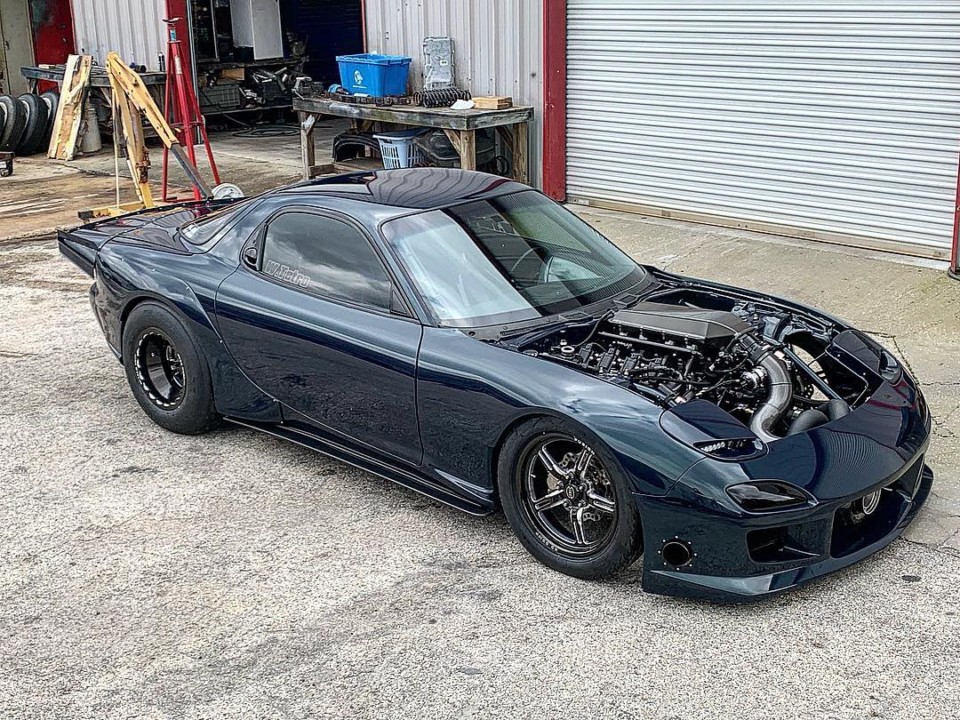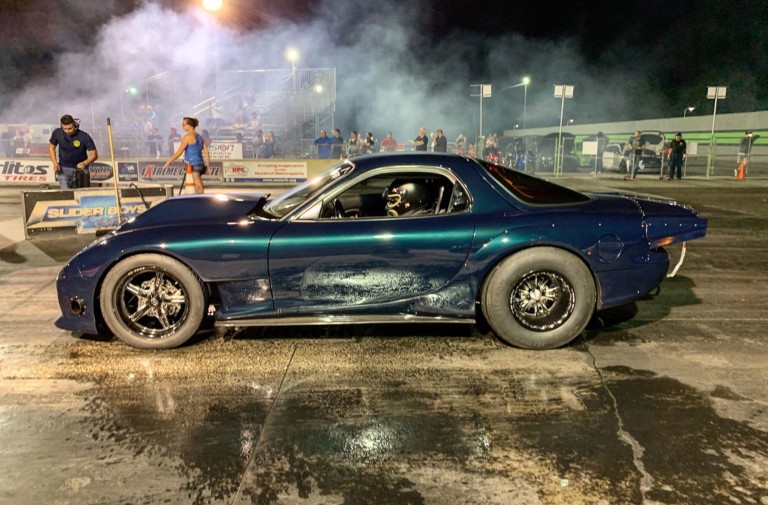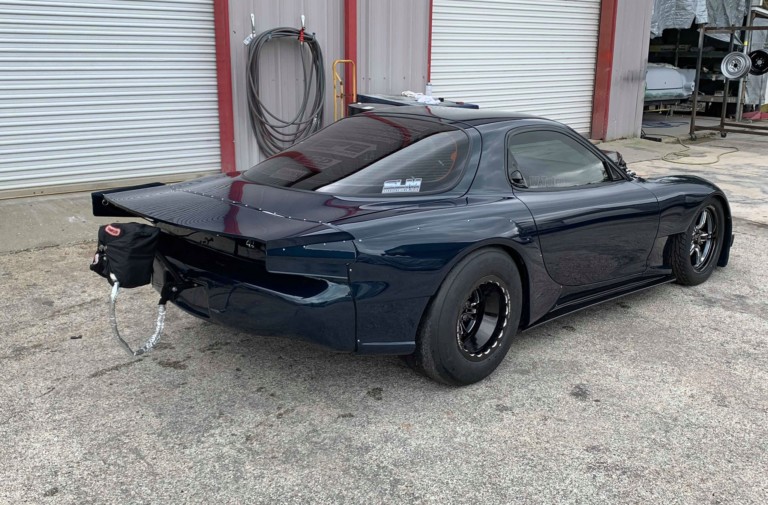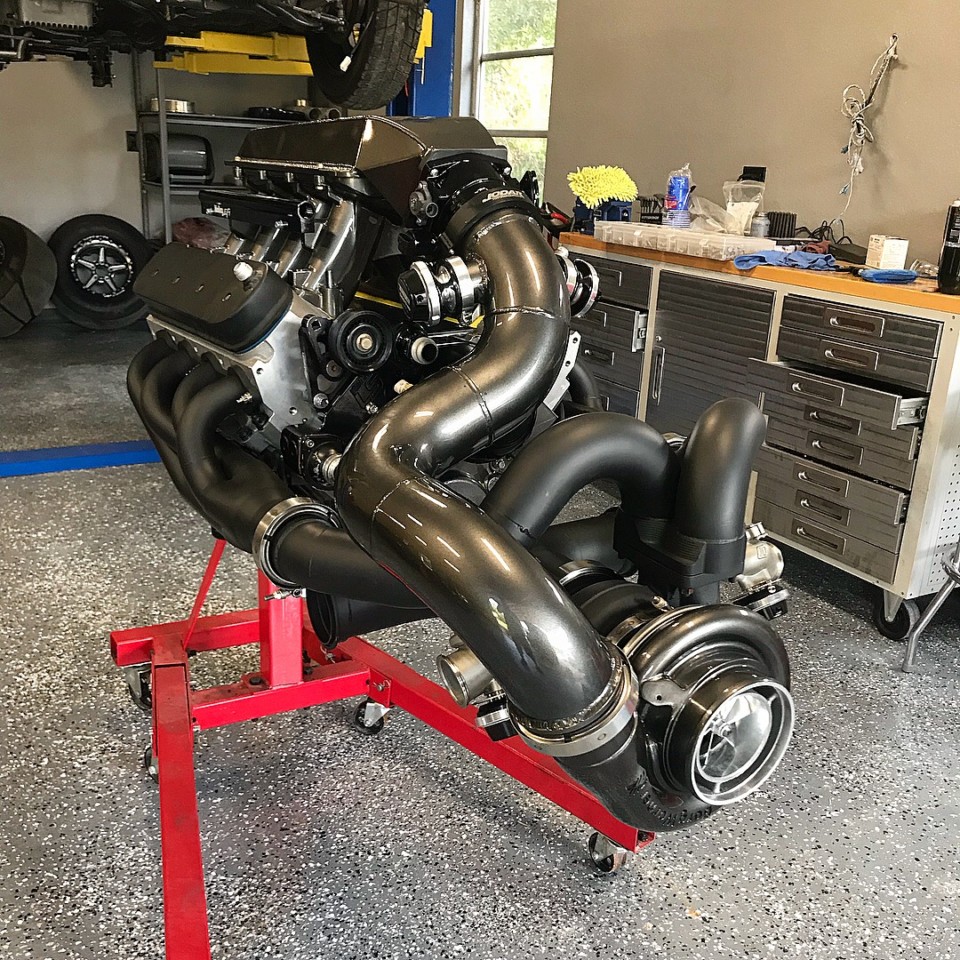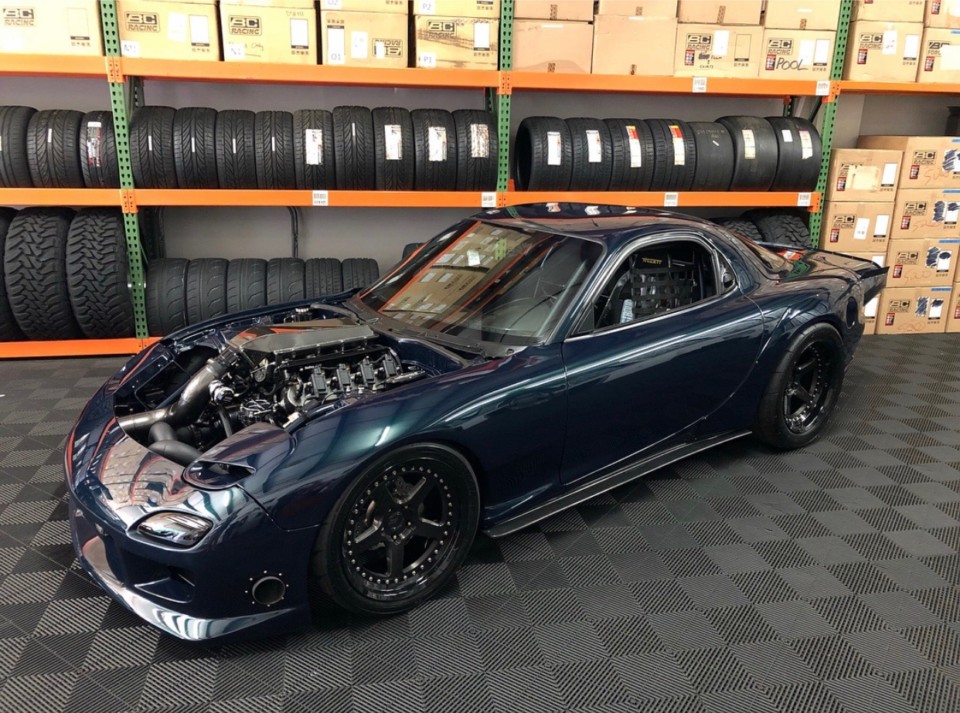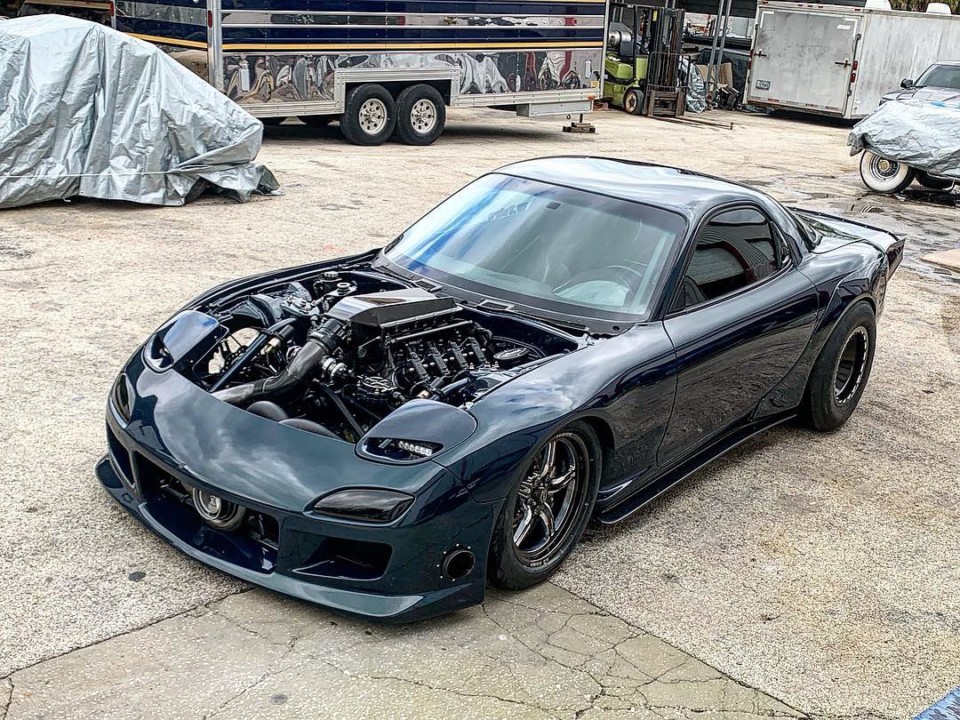LS swaps, thanks to their relatively low entry cost and wide appeal, tend to run the gamut — from rudimentary swaps of high-mile, bone-stock 5.3’s into raggedy Fox bodies, to certifiable show-winners utilizing high-end aftermarket parts. Whether you’ve got money or you don’t, swapping is for everyone….that fact is what has made the LS one of hot rodding’s all-time-great engine platforms.
William Tetro’s 1994 Mazda RX-7, as you’ll see, is most certainly the latter of the two extremes.
The Florida native has assembled one of the most striking RX-7’s in the country, with menacing looks to go with the built-LS under the hood that’s primed to push it into the 4-second range. Tetro self-built the 388 cubic-inch mill that’s paired with a 91mm BorgWarner turbo.
Tetro has owned the RX-7 for eight years and notes that, “pretty well everything was built in my garage.”
Coast Chassis Design corrected some of the suspension woes by adjusting 4-link pickup points, and recently also converted the front half of the frame to round-tube and fabricated new hot and cold side turbo piping. An 8.50-cert cage keeps Tetro safe on what he says, without giving away too much, are “low 5-second passes.”
The LS is backed by a JW Transmissions-built Turbo 400 with a Neal Chance converter, transferring the power to a 8.8 rear supported by an aftermarket 4-link rear suspension setup.
“We’re shooting to make it a high 4-second car. Right now we’re treating it as a no-time car, but my ultimate goal is to run it in Ultra Street. But for right now, we’re just trying to get the chassis figured out. We’ll keep running no-time and grudge events until we get it all lined out and then we’ll swap to the 76mm turbo and go to Ultra,” he notes.
Tetro assembled the engine in his garage utilizing an array of parts well-removed from the junkyard LS’s of the world. A Dart LSNext block houses a Callies Dragonslayer crankshaft, Oliver billet rods, and a custom set of Wiseco pistons. Dart Pro1 LS3 heads massaged by SPS Cylinder Heads sport Jesel rockers, activated by a ‘Lil John Motorsports turbo camshaft. A Holley Hi-Ram lower manifold is mated to a custom 417 Motorsports sheet metal lid. Tetro tunes the car via a Holley Dominator ECU, and Holley Smart Coils provide the spark to each cylinder.
“This car has had a turbo LS for about five years now, but this last transformation is recent — I just got it running back in October. This is my final rendition…if I can’t get it running like this then it’s not going to. It was originally set up as a street car with an LS3 in and a six-speed, but then I started getting into drag racing and it slowly transformed from a street car with power steering and and air and all of that to what is essentially a racecar,” Tetro explains.
The RX-7 is, however, still tagged and inured and is driven on the street on occasion, but burning methanol sans an intercooler, Tetro admits it’s not cut out for endurance.
The 275 drag radials are wrapped in a 15×12 set of RC Components wheels; RC wheels are also placed up front, giving the little Mazda a huge boost in the appearance department. The rear suspension is a complete bolt-in kit for the RX-7, with considerable modifications by Coast. Up front, factory control arms are paired with Penske coilover shocks. TBM Brakes are at all four corners.
William also has a partnership with BC Forged, a local wheel manufacturer that provided him a set of street-specific wheels and shocks that he utilizes on the occasions when it’s street-driven. That setup features an 18×12 rear with 345 radials and 18×9’s up front with 255 rubber.
William notes that by the end of the season he’d like to make the transition to Ultra Street, potentially in time for No Mercy X in South Georgia in October. With him in the seat, the car weighs just 2,826-pounds — thanks in part to the fiberglass front fenders, front bumper, and hood. Widebody over-fenders help to visually contain the wide radials. The rest of the car, including the doors (with working power windows) are still factory steel, and the windows are still OEM all the way around.
Inside are a pair of lightweight carbon fiber seats that weigh just 6-pounds apiece, with full interior and dash with carbon inlays and a Holley 7-inch LCD dash providing the vital data.
An impressive piece, to say the least, and one radial-tire racers will be getting more familiar with in the months to come as Tetro transitions over to clocks-on class racing.

